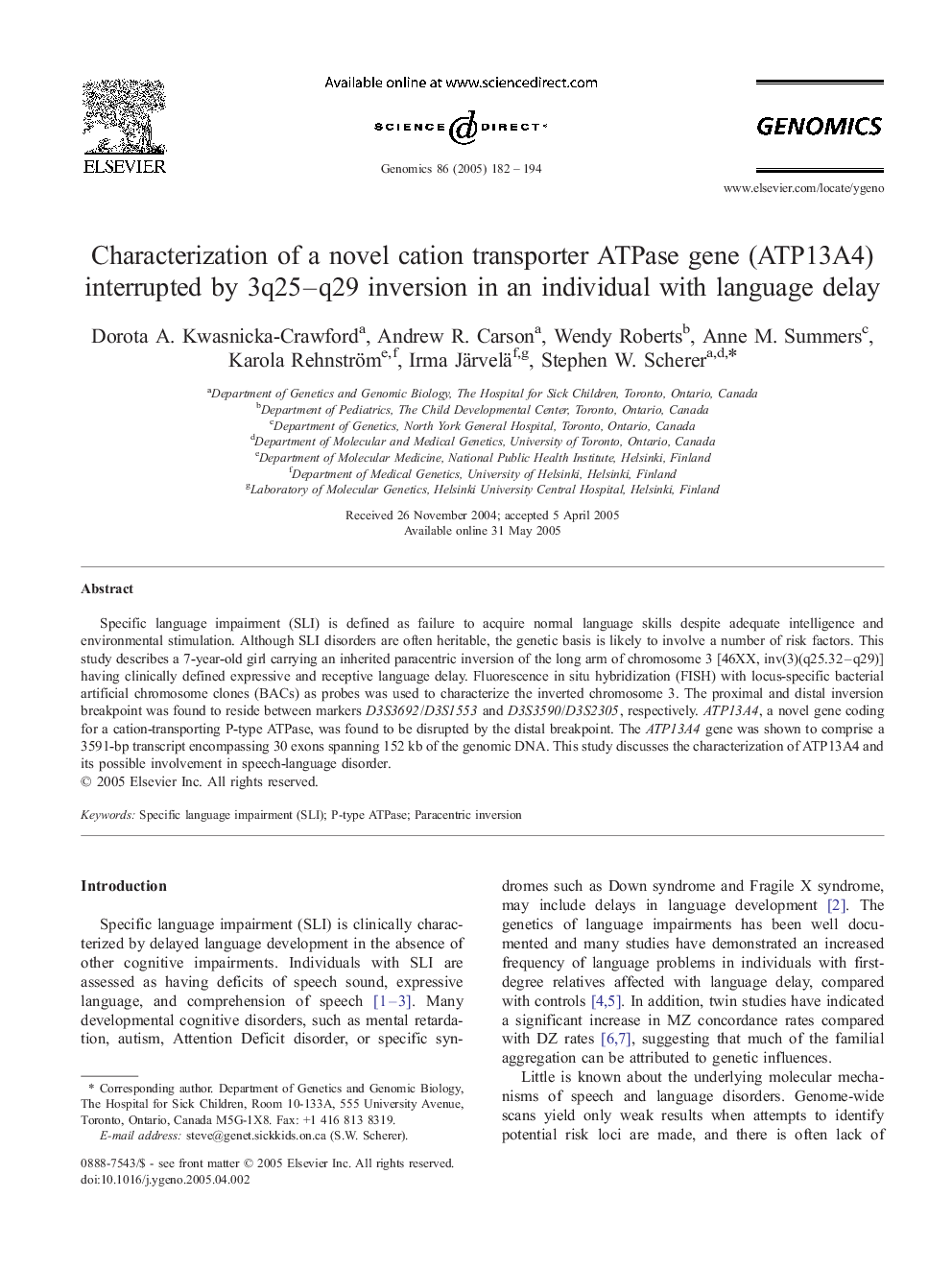| Article ID | Journal | Published Year | Pages | File Type |
|---|---|---|---|---|
| 9131884 | Genomics | 2005 | 13 Pages |
Abstract
Specific language impairment (SLI) is defined as failure to acquire normal language skills despite adequate intelligence and environmental stimulation. Although SLI disorders are often heritable, the genetic basis is likely to involve a number of risk factors. This study describes a 7-year-old girl carrying an inherited paracentric inversion of the long arm of chromosome 3 [46XX, inv(3)(q25.32-q29)] having clinically defined expressive and receptive language delay. Fluorescence in situ hybridization (FISH) with locus-specific bacterial artificial chromosome clones (BACs) as probes was used to characterize the inverted chromosome 3. The proximal and distal inversion breakpoint was found to reside between markers D3S3692/D3S1553 and D3S3590/D3S2305, respectively. ATP13A4, a novel gene coding for a cation-transporting P-type ATPase, was found to be disrupted by the distal breakpoint. The ATP13A4 gene was shown to comprise a 3591-bp transcript encompassing 30 exons spanning 152 kb of the genomic DNA. This study discusses the characterization of ATP13A4 and its possible involvement in speech-language disorder.
Related Topics
Life Sciences
Biochemistry, Genetics and Molecular Biology
Genetics
Authors
Dorota A. Kwasnicka-Crawford, Andrew R. Carson, Wendy Roberts, Anne M. Summers, Karola Rehnström, Irma Järvelä, Stephen W. Scherer,
